Not having a Monstera in your home is almost a sin if you’re a certified plant lover. Nicknamed the “Swiss Cheese Plant,” Monsteras have beautiful leaf patterns that inspire many of the designs in wallpapers, fabrics, and throw pillows. Their large, heart-shaped leaves have become a statement, a showcase of the grandeur of ornamental plants.
To make sure your Monstera grows as tall and beautiful as you’re hoping, you have to think about more than just how much light it gets and when to water. You have to go back to the plant’s roots!
By choosing the best soil mix, you can make sure your plant is getting the nutrients it needs while avoiding some common problems.
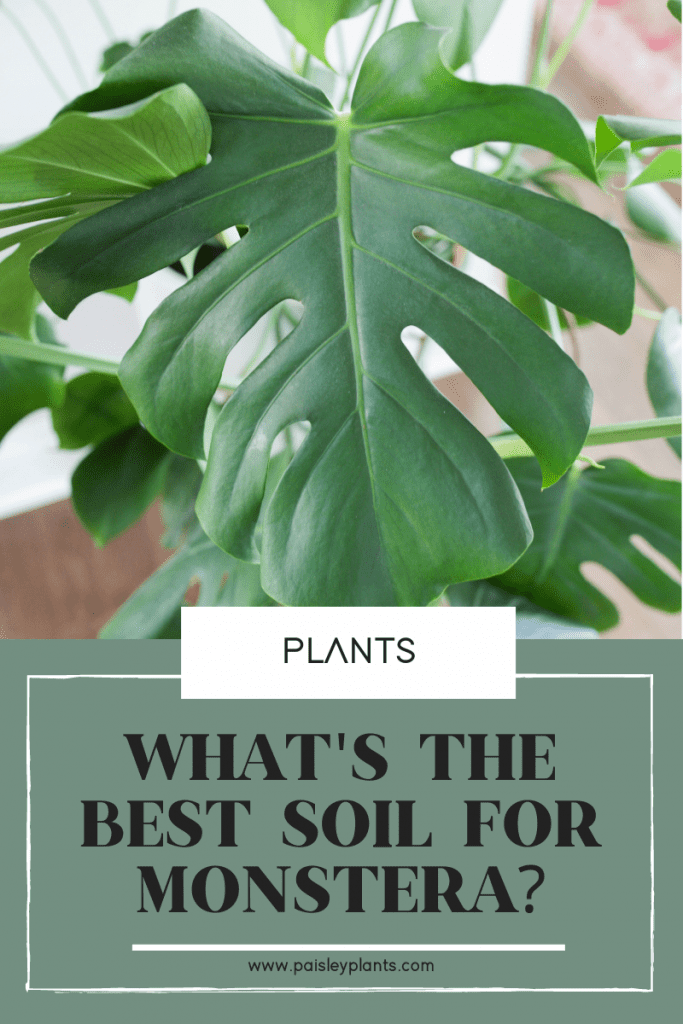
Table of Contents
What’s a Monstera?
Monstera deliciosa, commonly just known as Monstera, is a climbing plant from the Araceae family, of which Monstera is a genus. Many believe “Monstera” may be a derivative of the Latin monstrum, which translates to “monster.” That translation fits the aesthetics of this climbing vine, a majestic aerial presence with perforated leaves.
Regardless of its etymology, if you already have a lovely Monstera settled in your home or are convincing yourself to buy one, you need to have a good understanding of how to care for it.
As with most ornamentals, Monsteras have their set of specifics for watering, sun exposure, and soil type and composition.
Basic Monstera Care Tips
Despite its elegance, M. deliciosa is a low-maintenance plant. Beginners who want fancy greens without excessive upkeep will find the Monstera to be the ideal ornamental plant.
Here is a breakdown of the essential care tips for a Monstera.
Water
Monstera need to be watered about once a week and will need even less water during the winter months. Being a native of America’s humid tropics, it prefers to be under-watered.
The soil moisture level is a good indicator for whether you need to water your Monstera.
To check if it needs water, stick your finger into the plant’s soil. If the first few inches on top are already dry, then your Monstera definitely needs some moisture. If you feel any moist soil, give it a few more days before your next watering session.
Pro tip: Filtered water for watering your Monstera gives the best results.
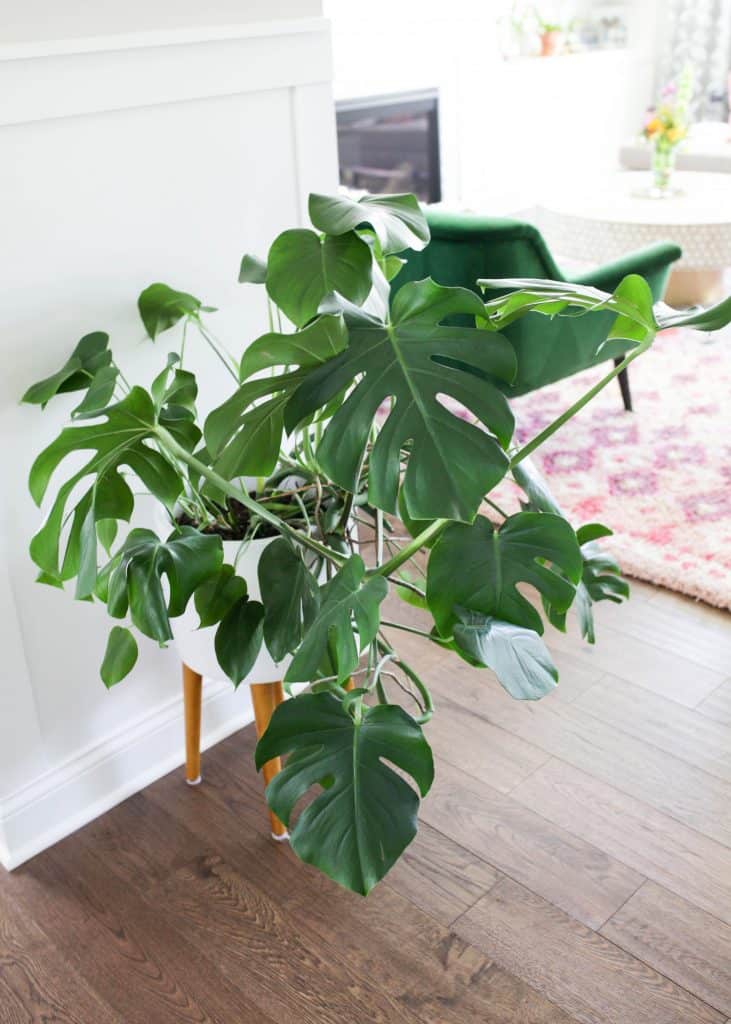
Light
Monsteras need indirect light. The beautiful, perforated leaves can wilt and burn with too much exposure to direct sunlight, turning luscious greens into lifeless yellows.
A surprising trait of Monsteras is that if they don’t get enough sunlight, new leaves will start growing toward darker spots as it wants to chase the dark abyss. This phenomenon, called negative phototropism, is the Monstera trying to mimic growth within the tropical jungles.
Humidity and Temperature
Tropical plants like the Monstera are used to humid environments, so you can conveniently place your plant in the bathroom or anywhere in your home with high humidity.
They don’t need hot places to thrive, but they also won’t survive in cold and drafty areas. Sudden drops or temperatures under 55 degrees Fahrenheit are bad news for your Monstera.
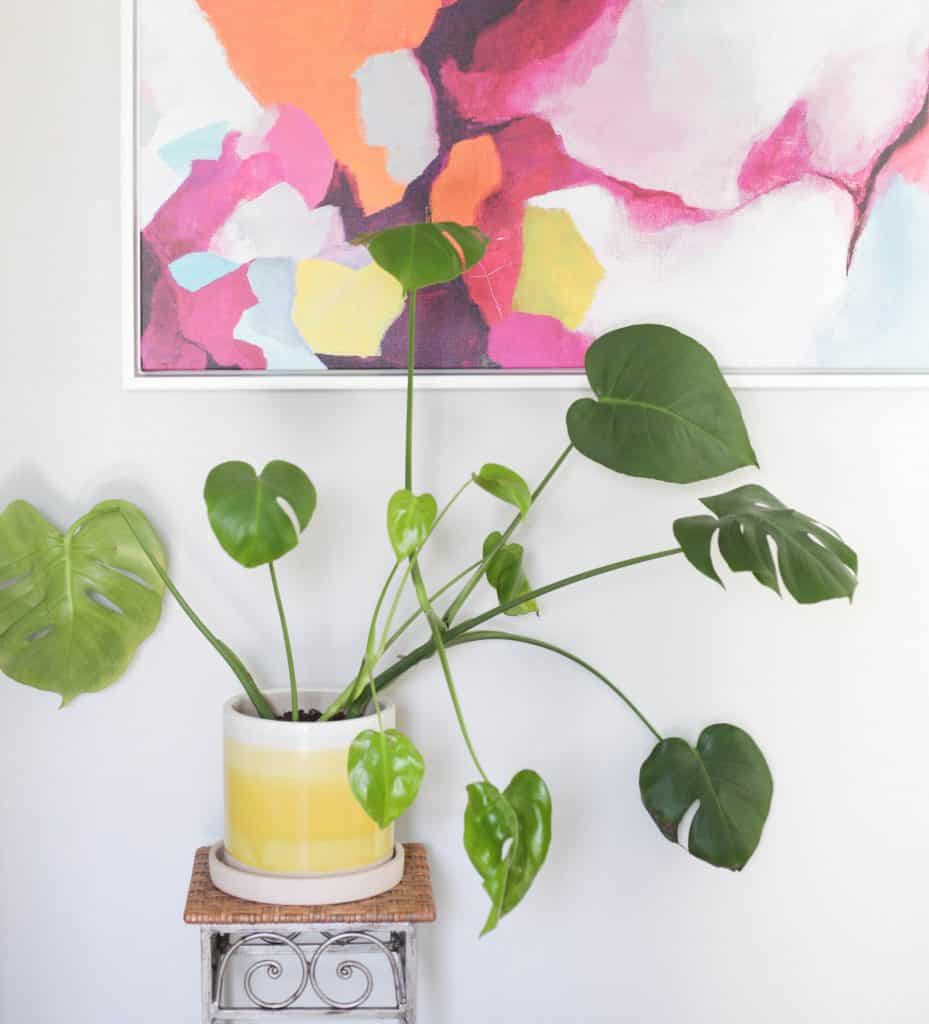
Fertilizer
Unlike other plants that need a regular dose of fertilizers to flourish, Monstera deliciosa plants generally don’t need them. But they’ll grow faster with the occasional fertilizer application.
Giving your Monstera some nutrient supplements once a month is enough, especially during its growing season, usually in spring and summer.
Best Kinds of Pots for Monstera
There are different varieties of pots meant for ornamental plants. Structural design and material composition will vary depending on the intended use.
Common material choices include ceramic, terra cotta, plastic, wood, and metal pots. Some material compositions may be better than others based on your plans for the pots.
Do you want to hang them on your front porch or put them beside your furniture in the house? Lighter, sturdier materials are generally better for hanging pots while nonporous materials are ideal for pots you plan to put in your living spaces.
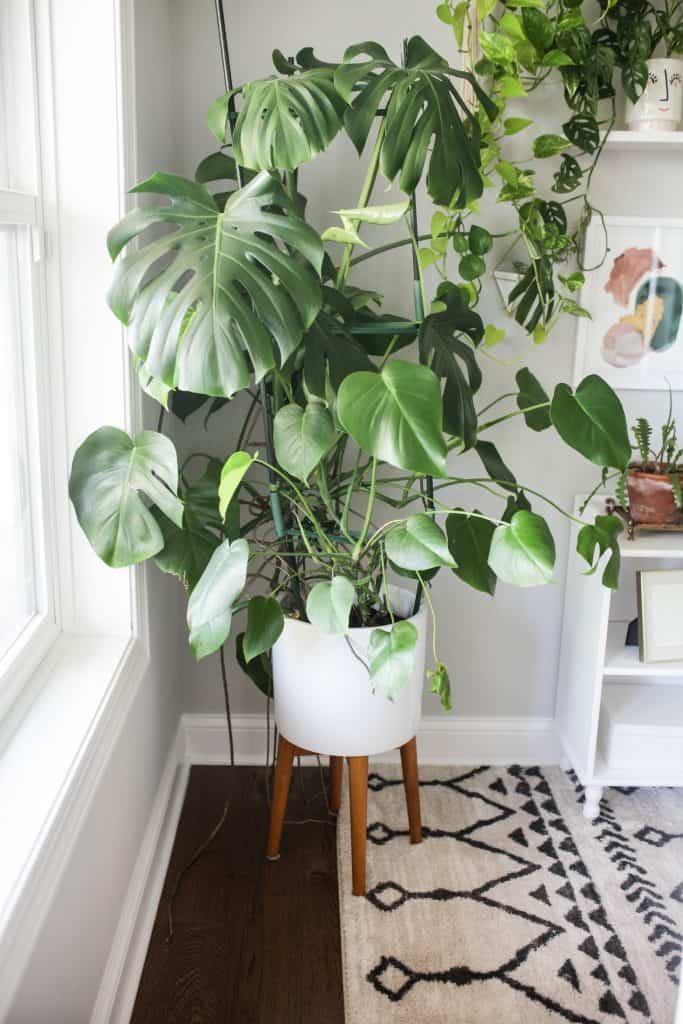
Structural design would be up to your aesthetic preferences and how the pots fit with the rest of your furnishings. If you want convenience, there are also self-watering pots that can help you reduce the frequency of watering your plants.
Monstera plants thrive better in simple containers either made of glass or plastic deep and wide enough to provide your plant plenty of space. The pot size should allow the soil roots (don’t worry about the aerial roots) to have about an inch of space to grow.
Pots Without Drainage Holes
This kind of pot functions as an enclosed container. When you water your plant, all the water permeates into the soil and stays there until it either gets absorbed by the plants or evaporates.
Pots without drainage holes are designed for your convenience in mind, not so much for the plants’. This kind allows you to thoroughly and efficiently water the entire foliage anywhere because you don’t have to worry about spills or cleanup.
Unfortunately, soaking plants in water is not advisable. Excessive moisture may cause the soil to become waterlogged. And as a result, the air supply to the plant roots is either reduced or completely cut off.
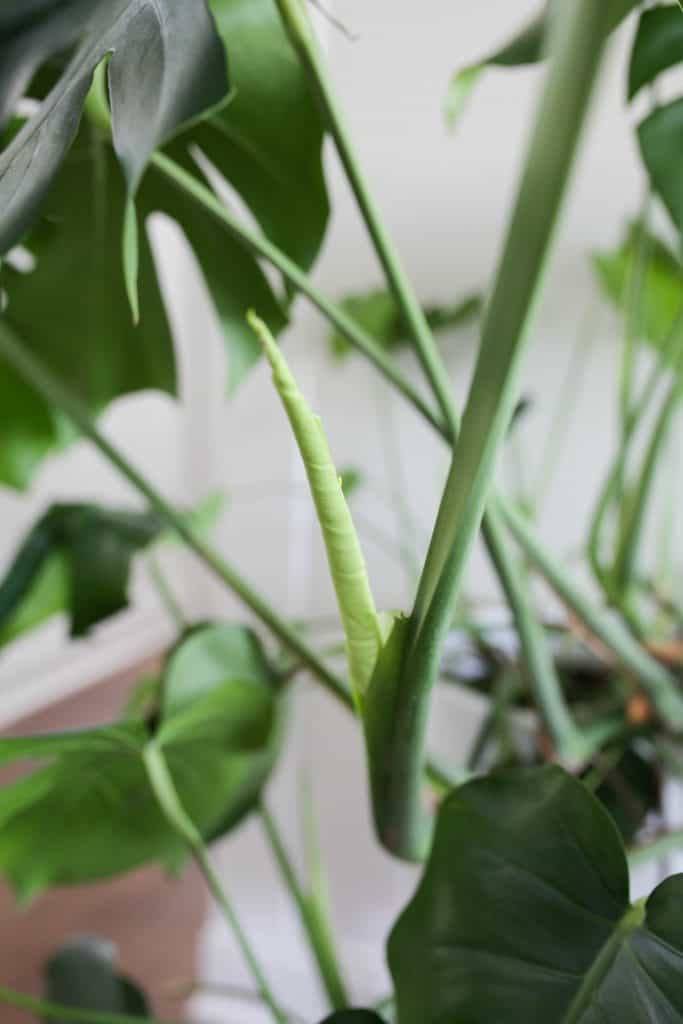
Without enough air, the Monstera’s roots can rot, causing complications that may eventually lead to your plant dying. Waterlogging is a common occurrence when using pots with no draining holes, which is why the owner has to be careful when adding water if there’s not good drainage.
Maintaining the water level and knowing how much water to put in and the frequency is crucial when using this type of pot. If you don’t have the time to pay close attention to moisture retention, get a pot with drainage holes.
Pots With Drainage Holes
A pot with draining holes is suitable for a Monstera. The draining holes ensure that the soil is not always overly wet by allowing excess water to flow out, helping avoid root rot.
You can use the drainage holes to alert you when you pour in too much water. The holes allow water that the soil can’t hold to drain out, ensuring that the roots will have a steady air supply. Granted a stable air supply, the plant will have no problem thriving.
A convenient way to water your indoor plants without worrying about the excess coming out of the drainage holes is to place a saucer below the pot. The excess water goes into the saucer, and you save yourself from having to clean the spillage.
While picking out a pot, also take into account that it should be heavy enough to support the foliage of your Monstera as it grows in length and width.
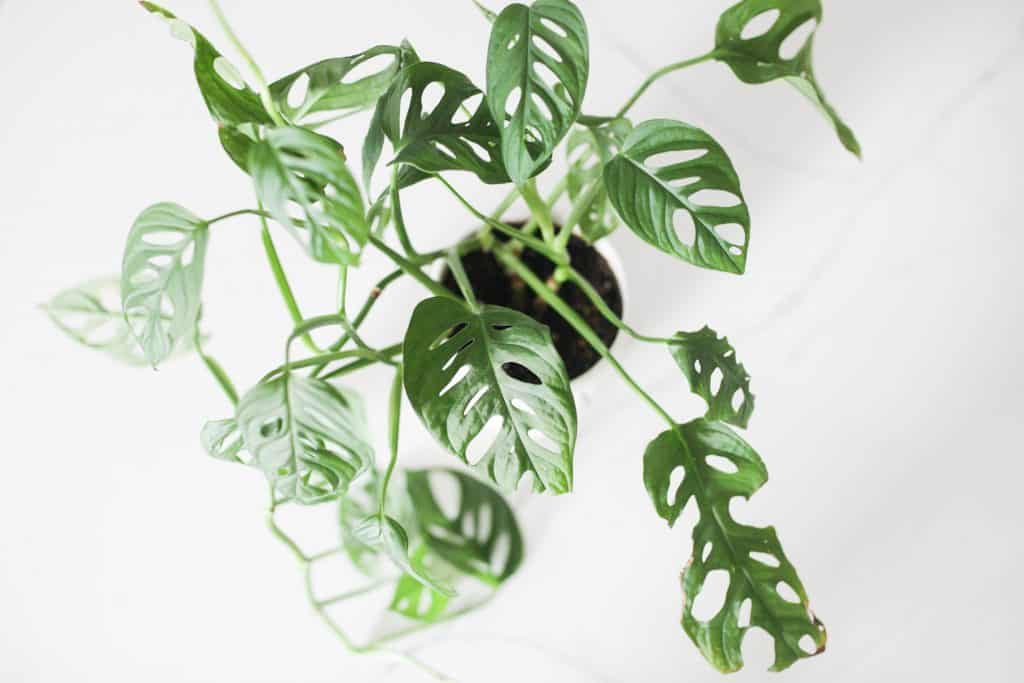
What’s the Best Soil for Monstera?
Plant your Monstera in containers with drainage holes, and make it a habit to use only the best potting soil for your plant.
Opt for soil with peat moss because this combination tends to hold less water. Well-draining soil like the Miracle-Gro Indoor Potting Mix is one of the top picks because it has coconut coir, which is well-known for maintaining moisture levels.
Another viable option is the Premium Monstera Potting Soil. It contains organic aged bark and perlite on top of coco coir.
If you’re in the market for nutrient-rich soil, however, you should consider Fox Farm Ocean Forest Potting Mix and Fox Farm Happy Frog. The potent mix of aged forest products, sandy loam, and sphagnum peat moss will help all the plants’ nutrients get distributed.
Whatever soil you choose, take note of its PH levels. Monstera prefers slightly acidic soil, where the pH level is 5.5 to 6.5.
Why Good Soil Matters
Your Monstera cannot live with water and sun alone. Even if you’re generous with the fertilizer, much of the plant’s sustenance will still come from the nutrients that the soil has already absorbed.
The soil is responsible for providing the nutrients that your Monstera needs and keeping its roots anchored. It should support and hold the plant, working with the stem and roots to keep it upright.
Additionally, suitable soil for a Monstera should foster better airflow. The soil should freely allow air to circulate from the roots and up to the branches and leaves. It also needs to hold on to the nutrients that the plant needs and be able to facilitate better absorption by the roots.
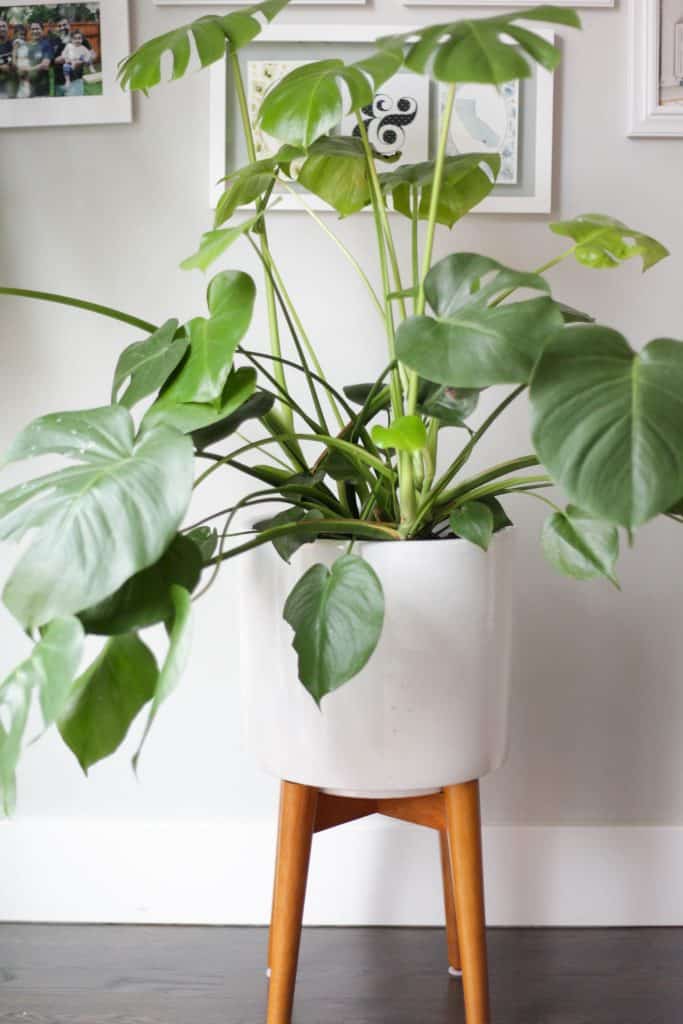
Signs You’re Using the Wrong Soil
The Monstera is quite responsive to the soil composition. When you use the wrong soil mix, your plant will tell you visually.
The two most apparent signs that you need better soil are the following.
Yellowing Monstera Leaves
This is a tell-tale sign that there’s something wrong with your plant. It could be that its roots are not receiving enough air.
This can be traced back to your soil mix, which may be holding too much water. You are left with a Monstera that is silently drowning and gradually rotting due to the excess moisture.
Make sure you’re only watering the plant when the soil is dry on top and that your pot allows the soil to drain. If those aren’t the problem, switch to a soil that drains better — look for ones that contain some type of peat moss, coconut coir, and/or perlite.
Brown Spots
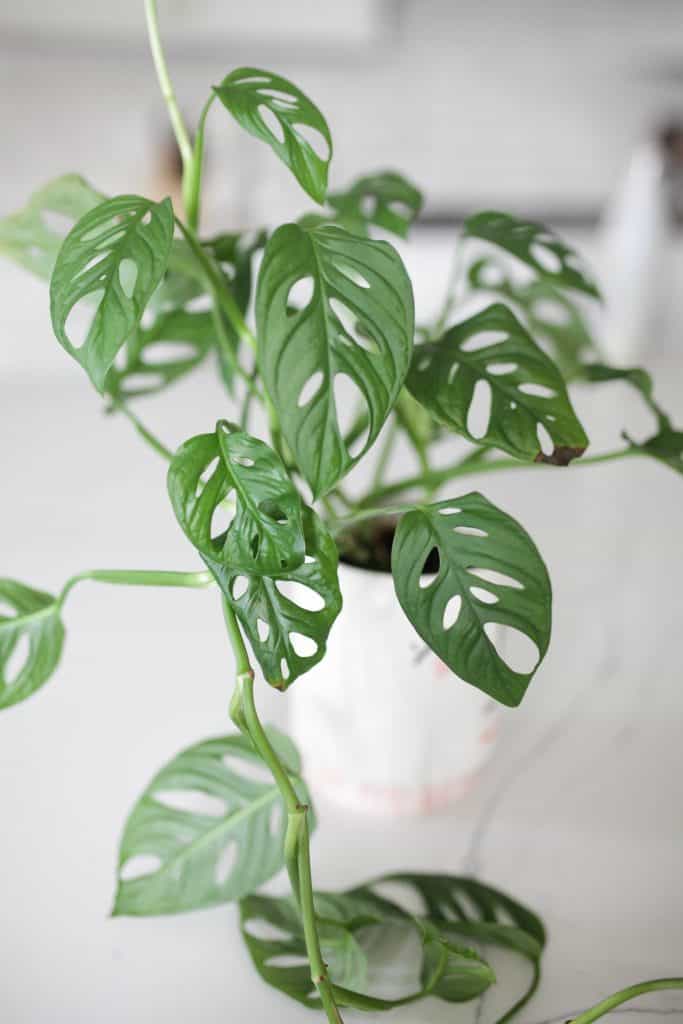
The appearance of brown spots on the leaves of your Monstera is a sign that you are overwatering your plant. These spots usually start small and grow bigger as they spread throughout the leaves.
Even if you are only watering your plant once a week, if your choice of soil holds excessive amounts of water, then it can’t naturally dry out. Soaking the roots in too much water will lead to root rot. With fewer roots to sustain the rest of the plant with its needed nutrients, the plant eventually ends up dying.
One of the top choices today of an excellent Monstera soil is Dirtco. House & Tropical Plant Potting Soil. It does not hold excessive amounts of water and can naturally dry out the remaining moisture.
Frequently Asked Questions
Cactus soil, which is sandy in nature, is not recommended for Monsteras. It’s too dry and can’t retain enough moisture.
However, if you tweak the composition a bit and add the standard cactus soil to peat moss or coco peat with compost, the new mix will be effective enough to keep the soil moist.
The compost also makes the soil richer in nutrients because of the organic matter in it. Such a mix is the ideal soil for the Monstera to grow and thrive in.
Young plants generally need to be transferred to a slightly larger pot every year. Sometime between late winter and early spring is best.
Part of repotting is “potting up,” which is an annual transition for Monstera plants. You need a bigger pot to transfer the plant into. If your Monstera is potted in an 8-inch diameter pot, it needs to be transferred to a 10-inch pot.
Even if your Monstera is fully grown, repotting is still recommended to refresh the soil. Repotting also allows for the roots to be pruned, which is ideal if you don’t want an oversized Monstera.
Enjoy Your Monstera
Monstera is an excellent addition to your plant collection. Its simple elegance can fit any home. Ensure that you provide your plant with the best environment for it to mature.
Enough water, sunlight, moisture level maintenance, and the ideal potting soil should allow it to flourish.
Love monsteras? Check out these different types of monstera plants!

